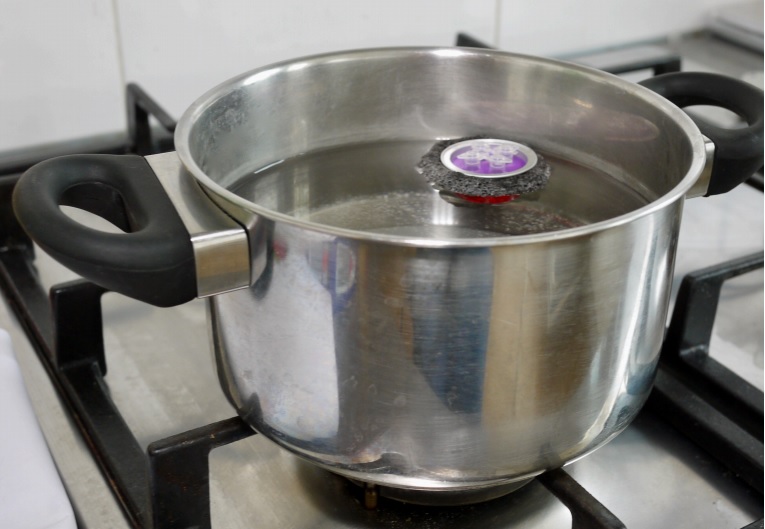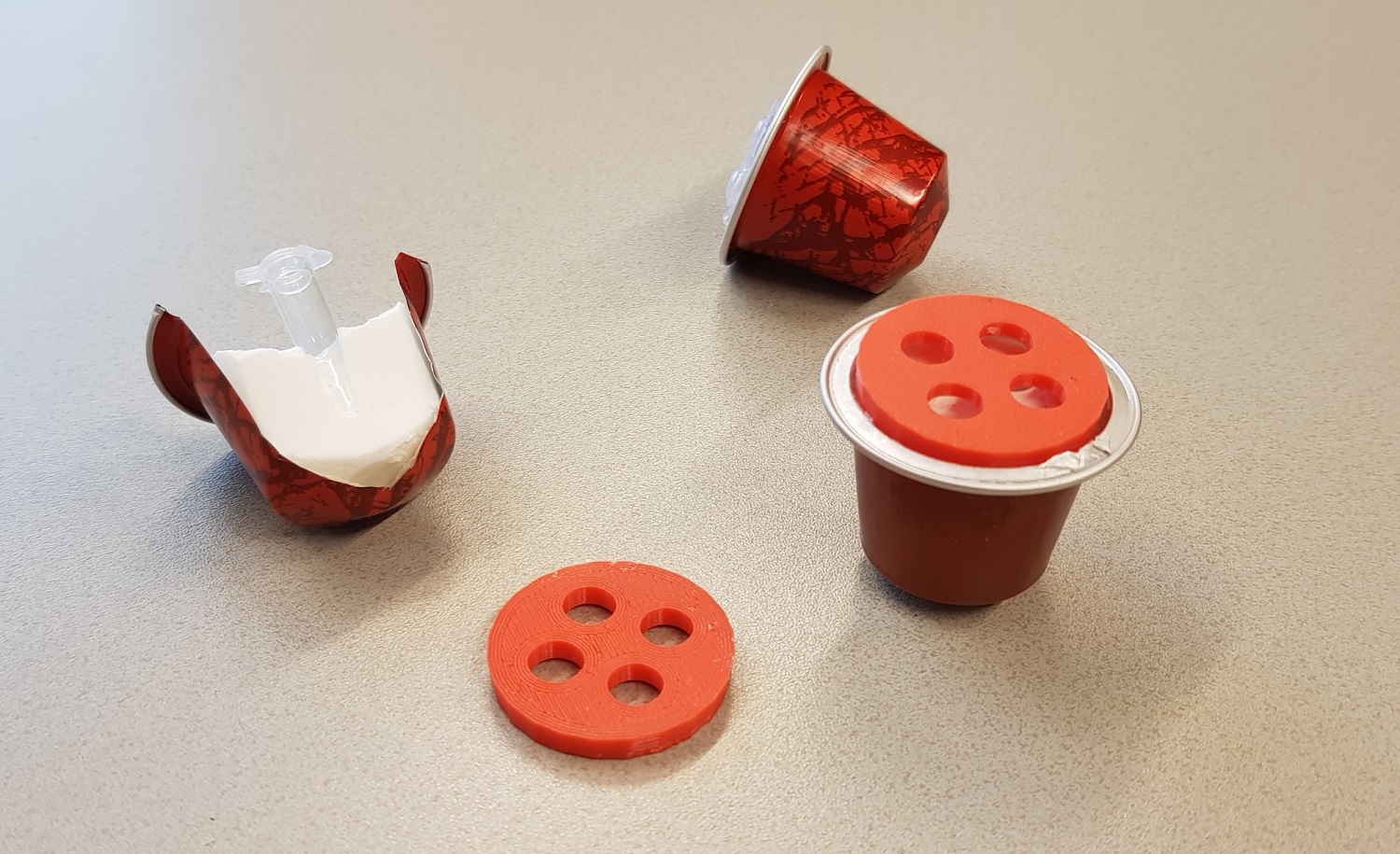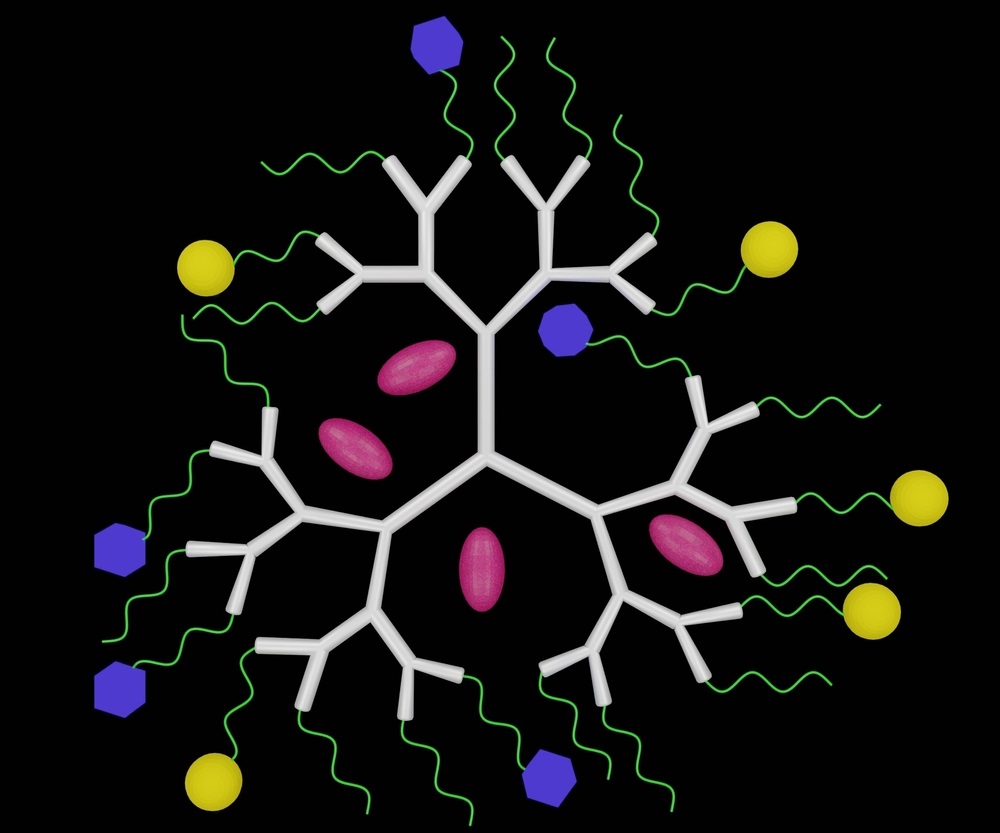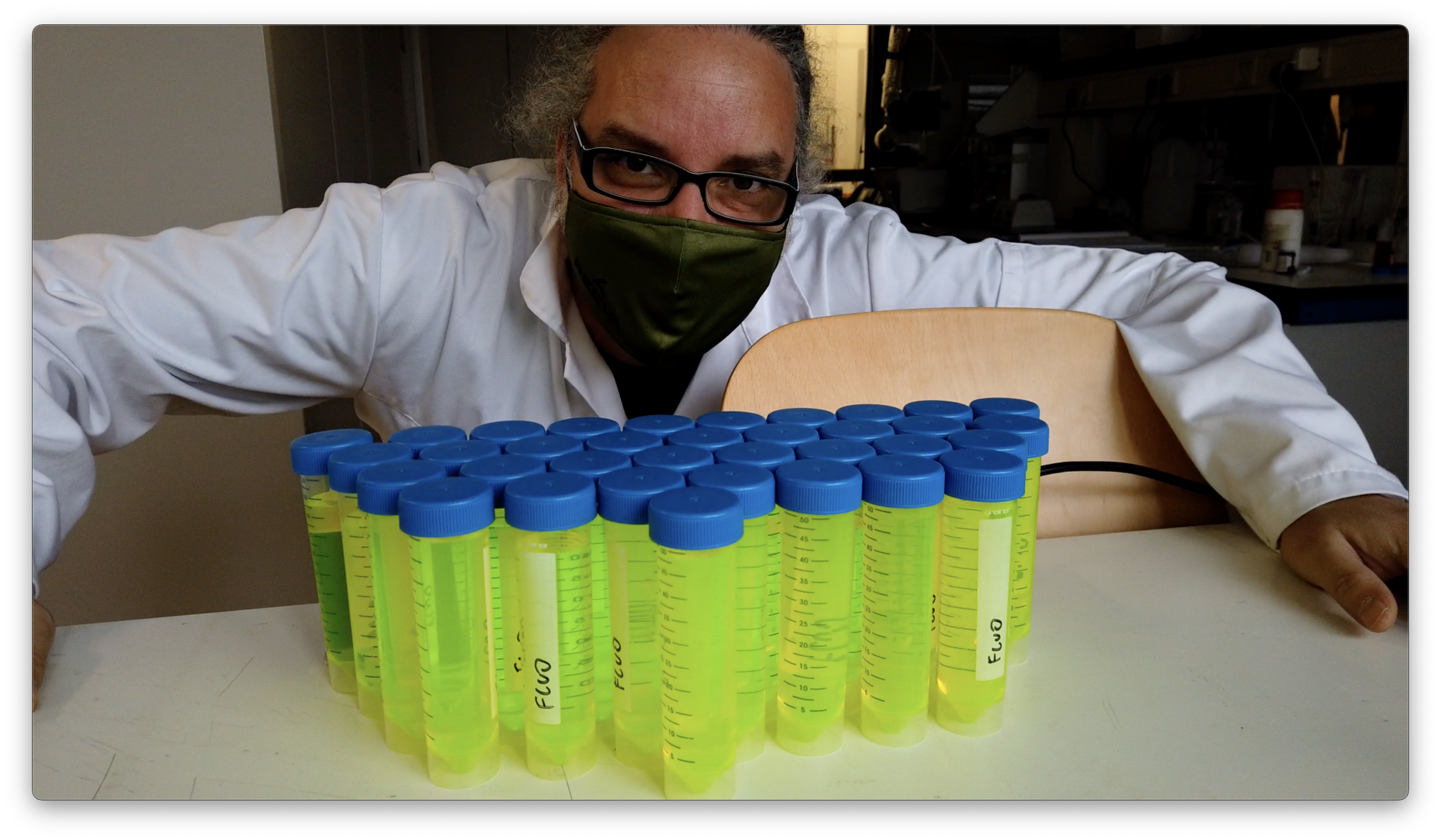The Wageningen self-test makes use of the virus’s genetic material just like the PCR test used at testing centres. But it is different too – a lot cheaper and you can do it at home using ordinary household items. The most striking of which is the reaction vessel you need: a Nespresso coffee capsule. Which is why the test has been dubbed CoroNaspresso.
‘Espresso because it means ‘fast’ in Italian,’ explains professor of BioNanoTechnology Aldrik Velders. He has Italian roots himself, as does his colleague Vittorio Saggiomo, who first came up with the concept. The design emerged during the first lockdown last year. ‘Vittorio was forced to stay at home and he started tinkering.’
I really encourage people in the group to be creative and think out of the box
Aldrik Velders, Professor of BioNanoTechnology
‘I really encourage people in the group to be creative and think out of the box,’ says Velders. ‘Try things out and generate new knowledge that way.’ Saggiomo, a pioneer in the use of 3D printing in science, came up with the coffee capsule idea. He printed a holder for test tubes to go with them and the minilab was ready.

The CoroNaspresso makes use of the LAMP technique (Loop-mediated AMPlification) to amplify small amounts of genetic virus material. This method works at a constant temperature, unlike the PCR test, which requires varying temperatures and therefore calls for laboratory equipment and skills. But how do you ensure a constant temperature with simple equipment?
In this minilab, you do so by using a special paraffin (candlewax) that melts at precisely the desired temperature of 65 degrees Celsius. As it changes between a solid and a liquid state, the substance absorbs heat from the environment (when melting) or emits it (when solidifying). The temperature of the substance itself remains constant throughout this physical process. Compare it with melting ice.
Hot water
The capsule with the paraffin in the holder is the reaction vessel. The test itself is a PCR test tube with the relevant reagent chemicals. After adding the specimen of nasal phlegm, the reaction is set in motion by placing the capsule in a pan containing a litre of hot water (just off the boil). You wait 20 minutes and remove the capsule from the cooling water. The colour of the solution reveals the result: infected or not.
It is not especially innovative science but practically, it is very creative
Aldrik Velders, professor of BioNanoTechnology
‘It is not especially innovative science,’ says Velders, ‘but practically, it is very creative. And the main thing is, it’s simple and cheap. Velders thinks the test can be produced for 20 eurocents. The test is no less sensitive than a PCR test. ‘And that sensitivity can be further increased with a different detection method. The current one is a colour change based on the acidity level of the specimen.’
Recyclable
The great advantage of the capsules is that they are widely available, and are reusable and recyclable, says Velders. Trials with real specimens, done with microbiologists from TNO Zeist, proved that the test works. Discussions about follow-up studies are under way with TNO Zeist and other potential partners within WUR. The method could also be used for other self-tests that are based on amplifying genetic material.




